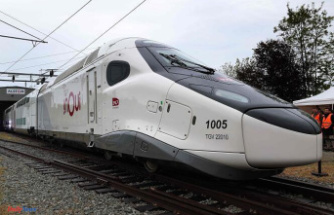In the Hamburg Museum for arts and crafts is accessible since a couple of years, with Foundation money, the East Asia collection of the house scientifically new, and are always cause for smaller exhibitions. So now for the "Copy & Paste repetition in the Japanese picture". As everyone knows, is interested in the art of the far East, is not bound by their understanding of the mastery of primary originality, but for perfection, especially in Relate to canonically recognized role models.
Andreas platthaus
editor responsible for the literature and literary life.
F. A. Z.That means a big difference between Western and Eastern Aesthetics. What the Museum does with it? Nothing. It gathered approximately 75 objects, which will prove the Japanese reproduction of fascination, and fills in some more cases with commercial trinkets, to illustrate the Thesis specifically on the example of the popularity of the Hokusai-the subject of the "Big wave vorKanagawa". Apart from that, you could do the same with the Mona Lisa or the angels of the Sistine Madonna, which is similar to the global image memory is enshrined Western masterpieces, has to do with the simple Acquisition of the famous example on a Vivienne-Westwood-dress is neither a craft nor culturally something to do with Japanese culture. And mass-produced Souvenir items also collect in Japan no claim to artistic quality.
The Great wave as a Prime example of Look, with the man – hopes – to-lure as a poster motif to a wide audience in the house, is in the Form of its many Marketing activities to illustrate the topic. And the juxtaposition of Utagawa His – wonderful – sketches with the custom-made Printing also contributes to the understanding of Japanese art and understanding: The exact Copy to image templates holdings European Eraser or wood-cutter the same, only the artists were mostly self. Original would have been, to tell in the exhibition something about those Japanese carvers and printers had to be recorded due to the strict censorship laws during the Edo period, in each case on the leaves to identify so easily. However, it remains at the Western Creator of the ideal, so the signatories.
Remains nothing of the "Copy&Paste"? But, thanks to the rich estate of the Japan-collector Gerhard Schack, who arrived after his death in 2007, the Museum for arts and crafts, there are also works from Japan, the von schack friend Horst Janssen have served as templates for their own Work. In an almost surrealistic way, a women's hairstyle, in a Janssen-drawing from a exact of him copied Japanese crustacean. This has nothing to do with the theme of "Copy & Paste", but a pure viewing pleasure. As well as Utagawa Kuniyoshi famous wood Krakeleien cut "a memory wall" from the year 1848, which draws its biggest joke out of a pun of the Japanese title, the revealed to the viewers that the alleged Doodles to elaborately caricatured Stars of the former theatre operation. Just what repetition is? The ratio between the Original and the Image is here, once again Variation, as in the case of the Janssen-image.
And yet, you go home enriched, because it has a lot of thought over the principle of artistic repetition as evidence of the Quality of – more, anyway, than that you would have seen examples of this. From labels vertigo, allows for a winning draw. The Museum should not repeat it too often.
Copy & Paste repetition in the Japanese image. In the Museum für Kunst und Gewerbe, Hamburg, 2020; up to 30. August. Sense no catalog way.
Date Of Update: 24 June 2020, 23:19











